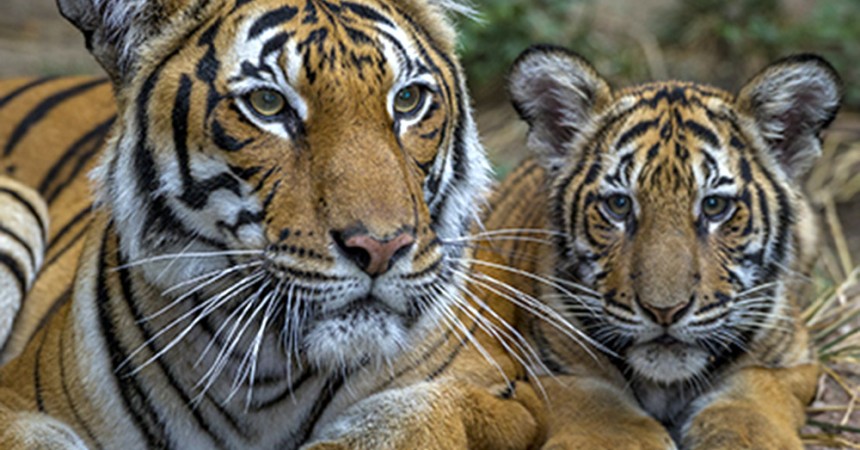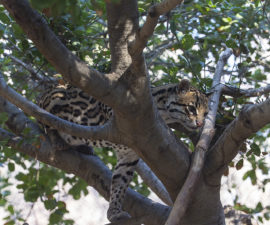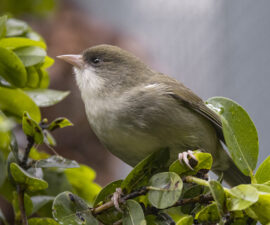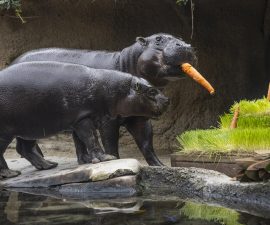“What are you drawing?”
“A liger.”
“What’s a liger?”
“It’s pretty much my favorite animal. It’s like a lion and a tiger mixed…bred for its skills in magic.”
Napoleon Dynamite
I began working for the San Diego Zoo Institute for Conservation Research in the Reproductive Physiology department in 2003. After about a year, I noticed the most commonly asked question from kids touring the lab was: “Do you make ligers here?” I think we can thank the hit movie Napoleon Dynamite for that, but as the years have gone by, the question still arises often in many different forms. I think we all are fascinated to hear about animal hybrids—the mixing of two animals of different breeds, species, or genera—but what do hybrids mean to conservation and why do we not use our advanced reproductive technologies to create them in the lab?
There are many types of hybrids that exist such as intrasubpecific hybrids between two animals of different subspecies (like Bengal and Siberian tigers), interspecific hybrids between two animals from different species (for example, lions and tigers, resulting in a “liger” or “tigon”), and intergenic hybrids between animals of different genera (as happens when sheep and goats breed, resulting in a “geep” or “shoat”). While hybridization is often thought of as a man-made phenomenon, natural hybridization does occur. Most of us are familiar with mules, which are the product of a female horse mated with a male donkey. Mules are prized for their great strength and endurance, but all male mules and most female mules are incapable of producing offspring. This is common in hybrids because their genetic material is not perfectly matched. There is also a hybrid animal called the beefalo (prized for its meat) that is the offspring of a North American bison and a cow.
Those last two examples are domestic animal hybrids that possess traits valued by humans, yet there are many issues that occur when non-domestic animals hybridize. Wild animals have evolved over millions of years through natural selection, a process that increases the probability of survival and reproduction. Hybridization, however, can result in the loss of a morphological or behavioral trait that may be necessary for survival.
An example of this is when a mule deer that uses a “stotting” escape strategy breeds with a white-tailed deer, which employs a galloping escape strategy. The hybrid offspring inherits a slow and inefficient gait, making it vulnerable to predation. And in cases where domestic cats that have gone feral breed with wild cats, the offspring are not as genetically strong and this can affect their resistance to disease.
As climate changes occur and humans modify animal habitats, wild hybridization may become common. One such example is the “grolar bear”—the offspring of a grizzly and polar bear—that was seen in Canada. This hybrid could occur more frequently as polar bears, driven from their typical range due to melting sea ice, spend more time in grizzly territory.
If hybridization sometimes seems to create a more “fit” animal or occurs in the wild occasionally, why don’t we use our laboratory skills to create them? We have the ability to inseminate the egg of one animal with sperm from another closely related species and grow an embryo that could be placed into a host female of either species. But we don’t, simply because San Diego Zoo Global’s mission is to save species worldwide by combining our expertise in animal care and conservation science with our dedication to inspiring passion for nature. We are in the business of saving species not creating new ones.
There are exceptions to this rule, such as when a population becomes so small that it can no longer sustain itself. In this case, scientists may agree that hybridization with a closely related subspecies is the only chance for survival. This has been attempted with the Columbia Basin pygmy rabbit and its close cousin, the Idaho pygmy rabbit. The Florida panther population was brought back from the brink of extinction by releasing female Texas cougars into the habitat for hybridization—the result was a three-fold increase in the number of Florida panthers, and the hybrid offspring were genetically healthy, stronger, and longer-lived.
So, I am afraid you will not see any ligers or grolar bears being created in our lab but that is because we are working hard to help tigers, lions, polar bears, and grizzly bears maintain or grow their populations. We think they are pretty amazing just the way they have evolved.
Nicole Ravida is a research laboratory technician at the San Diego Zoo Institute for Conservation Research. Read her previous blog, No Scientist is an Island.





